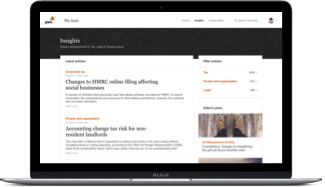Last week, draft UK regulations to implement EU Directive 2018/822 (DAC6) were published alongside a consultation document. DAC6 is an information reporting regime that requires intermediaries to disclose reportable transactions. For a transaction to be reportable, it must be cross-border and contain one of the hallmarks set out in Annex IV. Many of the hallmarks are only reportable if one of the main benefits of the arrangement is to obtain a tax advantage - the hallmarks related to the Common Reporting Standard (CRS) are not the same.
This is why Hallmark D1 requires a different approach. Reporting under D1 is information reporting on arrangements that have the effect of circumventing the CRS information reporting regime. A “CRS Avoidance Arrangement” is any Arrangement for which it is reasonable to conclude that it is designed to circumvent or is marketed as, or has the effect of, circumventing CRS Legislation or exploiting an absence thereof. This is a subjective standard that looks at whether entity classification, documentation, due diligence and reporting have the effect of undermining the objectives CRS. The preamble to DAC6 and UK Regulation 12(c) sensibly point to the Mandatory Disclosure Rules (MDR) developed by the OECD and related commentary as a source of interpretation. The OECD has more material available in relation to Hallmark D1 than any other, including detailed commentary and a specific schema for reporting.
CRS stands alone in being unable to leverage other UK compliance regimes such as ATAD/DOTAS/SAO/GAAR/CBCR to identify reportable transactions as these regimes do not apply to financial account reporting by 3rd parties. The notable exception is the Corporate Criminal Offence for the Facilitation of Tax Evasion (CCO) - which does leverage certain CRS procedures, but requires criminal evasion by a taxpayer and this may not be relevant when, for instance, a protector of a trust escapes reporting under the CRS. Moreover, the CRS is a relatively new compliance regime and contains notable and deliberate ambiguities such as the definition of a "Controlling Person" or a "Customer", which involve subjective determinations in the absence of clear guidance.
Where might decisions taken in the CRS compliance project implicate Hallmark D1?
What should be done to identify Hallmark D1 reporting obligations?

